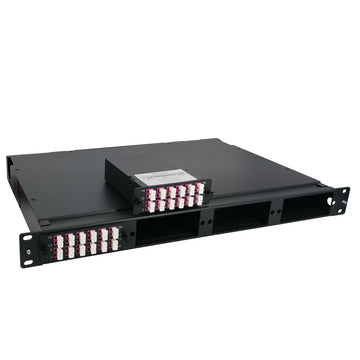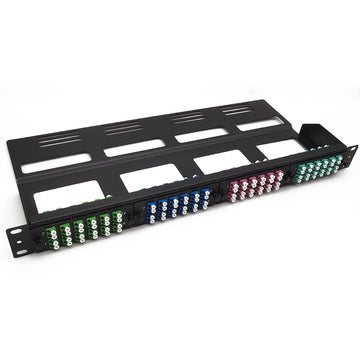48 Port 10GbE Switch: Choose SFP Switch or Copper Switch
48 Port 10GbE Switch: Choose SFP Switch or Copper Switch
The advent of big data, virtualization and cloud computing are pushing higher speed network adoption. As such, data center networks are going through a profound change — in which 40GE has become ubiquitous and 10GE a must. Network managers have reaped great benefits by deploying 10G Ethernet switch at the edge of the large professional network, which makes 10G SFP+ switch a choice for speed and productivity. In the midst of various 10G Ethernet switch, a 48-port 10GE switch is considered as an optimal solution for handling data traffic that delivers great scalability. Then how to choose the right 48-port 10GE switch? We’re going to explore it in this article.
Why Do I Need a 48-Port 10GE Switch?
10G Ethernet switch is a cost-effective solution compared to multiple Gigabit Ethernet ports, while delivers substantially better throughput and latency. It is already well established in IT industry and we’ve seen massive adoption of 10G infrastructure. Density, power and cooling of 10G SFP+ switch are key motivators for deployment of data center network. With compelling improvement in bandwidth, port density, latency and power consumption. 10G SFP+ switch has become the interconnect of choice for latency sensitive application with enhanced reliability and network performance. 10G Ethernet switch comes into various port configuration, and a 48-port 10GE switch is the most future-proofing one with abundant application in business oriented network. It increases the total available bandwidth, the reduced power consumption in cables and switch ports, and overall reduction in infrastructure costs.
48 Port 10GbE Switch: SFP Switch Solution
With the characteristics of better latency and throughput, 48 port 10g switch with fiber has been the future-proof 10GbE SFP switch with plentiful applications in the business-oriented network that can lower the overall infrastructure costs in the aspect of cables and switch ports.
Which allow for comprehensive protocols and applications to promote the all-round service deployment and management for traditional L2/L3/MPLS networks. What is more, this 48 port switch also provides high-availability properties, including pluggable redundant fans and high-quality electronic components which ensure lower power consumption. 48 port 10Gb fiber switch is ideal for solving the problems of access to core 10G network connectivity for businesses and data centers.
48 Port 10GbE Switch: Copper Switch Solution
10G Ethernet over copper still plays an essential role in the data center switch/server interconnection nowadays. 48 port 10Gb Ethernet switch over copper cable settles the bottleneck matter and creates great performance since it is fully backward compatible with 100/1000BASE-T and works with existing structured cabling systems, offering IT technicians the most flexibility in server placement.48 Port 10GbE SFP or Copper Switch: Which Is the Data Center Performance Choice?
- Price
10GBASE-T copper switch with 48 port uses copper cables to transmit 10Gbps data. This may help to save much money since copper cable infrastructure is far less expensive than the fiber optics of 10G SFP+ switch. So 10GBASE-T 48 port copper switch is much cheaper and provides the most economical solution than an SFP+ solution.
- Latency and Power Consumption
The power consumption of 48 port 10GBASE-T switch is 1.5 to 4 Watts per port depending on the distance, while 48 port SFP switch uses less power consumption which is typically less than 1 Watts per port. In addition, 10GbE SFP switch offers better latency with about 0.3 microseconds per link. 10GbE RJ45 switch latency is about 2.6 microseconds per link due to more complex encoding schemes within the equipment. With the compelling improvement in lower latency and power consumption, 10GbE SFP switch has become the interconnect of choice for latency-sensitive application with enhanced reliability and network performance.
- High-Speed Application
Since 48 port SFP switch is endowed with the advantages of lower power consumption and latency, it is more suitable for large high-speed super-computing applications where latency is a critical factor and high port counts can create significant power savings.
- Backward Compatibility
The 48-port 10Gb copper switch has the advantage of interoperable and standards-based technology using familiar RJ45 connectors. It provides backward compatibility with legacy networks. Whereas SFP switches are limited and have little or no backward compatibility.
Conclusion
The 48-port 10GbE switch is ready to play a larger role in data center applications and its future will respond to market demands. While 10G 48-port fiber switches have lower latency and power consumption, 10G 48-port copper switches are still popular for their cost-effectiveness and backward compatibility. Each has advantages and disadvantages, and you can choose according to your needs.












